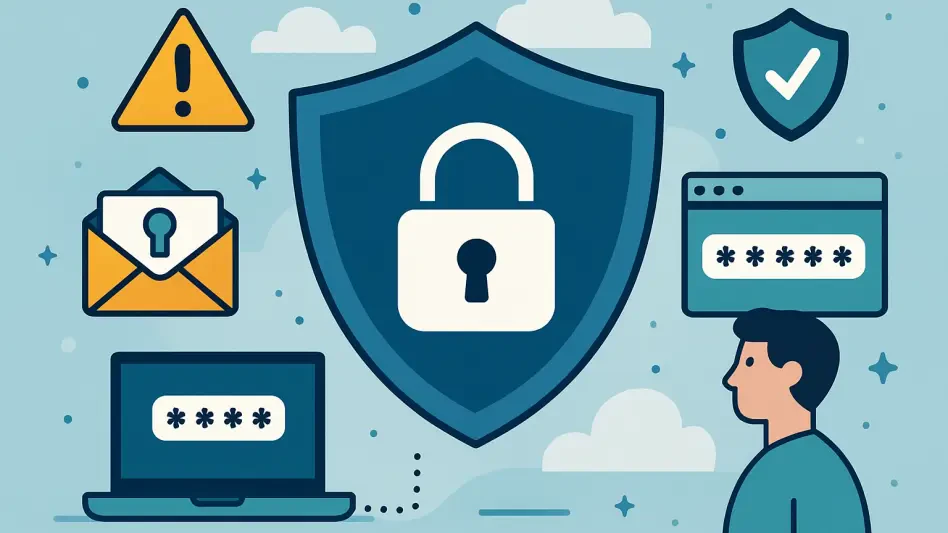In an era where digital connectivity is an integral part of daily life, the importance of cybersecurity cannot be overstated, especially as cyber threats continue to evolve with alarming sophistication. Every year, Cybersecurity Awareness Month serves as a critical reminder to individuals, businesses, and governments to prioritize the protection of sensitive data against malicious actors. From identity theft to ransomware, the potential consequences of a cyberattack can be financially crippling and deeply personal. The increasing reliance on technology for storing personal information, financial records, and business data has amplified the risks associated with inadequate security measures. A single breach can expose millions of records, damaging reputations and leading to severe legal and financial fallout. This month provides an opportunity to reflect on the vulnerabilities in digital networks and take actionable steps to mitigate risks, ensuring a safer online environment for everyone.
1. Understanding the Growing Cyber Threat Landscape
The scale and complexity of cyber threats have grown exponentially as technology becomes more embedded in everyday activities. Hackers and bad actors continuously develop new methods to exploit vulnerabilities, targeting personal information such as health records, financial details, and intellectual property. The rise of phishing attacks, where unsuspecting users are tricked into providing sensitive data through fraudulent emails or links, remains a leading cause of breaches. Additionally, ransomware has emerged as a significant threat, locking users out of their systems until a payment is made. These attacks often result in substantial losses, both in terms of money and trust. Protecting digital assets is no longer optional but a necessity, as the consequences of inaction can be devastating. Businesses, in particular, face reputational damage alongside legal challenges when customer data is compromised, highlighting the urgent need for robust cybersecurity strategies.
Beyond the immediate threats, the long-term implications of cybercrime are equally concerning. As more sensitive data is stored online, the potential for large-scale breaches increases, with millions of records at risk in a single incident. The Cybersecurity and Infrastructure Security Agency (CISA), known as America’s Cyber Defense Agency, emphasizes the importance of vigilance in cyberspace. Their guidance underscores that even small lapses in security can lead to significant vulnerabilities. For instance, outdated software or weak passwords can serve as entry points for cybercriminals. The financial sector, healthcare industry, and government entities are prime targets due to the high value of the data they hold. Staying informed about emerging threats and understanding how they operate is a critical first step in building a strong defense. By recognizing the tactics used by attackers, individuals and organizations can better prepare to thwart attempts at data theft or system disruption.
2. Practical Steps to Enhance Cyber Hygiene
One of the most effective ways to safeguard digital information is by adopting strong cyber hygiene practices, which are simple yet powerful measures to reduce risk. CISA recommends starting with the basics, such as using strong, unique passwords for every account. Relying on easily guessable information like birthdays or common phrases is a recipe for disaster. Instead, utilizing a trusted password generator ensures complexity and unpredictability, making it harder for hackers to gain access. Another key practice is to think twice before clicking on links or downloading attachments from unknown sources. Phishing attempts often disguise themselves as legitimate communications, tricking users into revealing sensitive details. By exercising caution and verifying the authenticity of emails, the likelihood of falling victim to such scams can be significantly reduced. These fundamental habits form the foundation of a secure online presence.
Beyond passwords and cautious clicking, additional layers of protection can make a substantial difference in securing accounts and devices. Enabling multi-factor authentication (MFA) adds a critical second step to the login process, such as a text code or an authentication app, which drastically lowers the chances of unauthorized access. Keeping devices updated is equally important, as software updates often include patches for newly discovered security flaws. When shopping online, using a credit card rather than a debit card offers better fraud protection, and regularly monitoring statements for suspicious activity can help catch issues early. Protecting personal information also means never sharing login credentials or financial details in response to unsolicited requests. If an email seems suspicious, reporting it to CISA at [email protected] ensures that potential threats are investigated and mitigated. These actionable steps empower users to take control of their digital safety.
3. The Role of Emerging Technologies and Oversight
As technology continues to advance, particularly with the rise of artificial intelligence (AI), new challenges and opportunities in cybersecurity emerge. AI has the potential to revolutionize how threats are detected and prevented, but it also introduces risks if not properly managed. Recognizing this dual nature, legislative bodies have taken steps to ensure responsible development and deployment of such technologies. For instance, task forces have been established to study AI’s impact on state governance and identify potential dangers to public welfare. These efforts aim to balance innovation with security, ensuring that AI serves as an asset rather than a liability. The focus on oversight reflects a broader commitment to safeguarding digital infrastructure as emerging tools reshape the cybersecurity landscape. Staying ahead of these changes requires continuous monitoring and adaptation to address vulnerabilities introduced by cutting-edge advancements.
Equally important is the role of long-term governance in managing technological progress. Committees dedicated to information technology oversight play a vital role in shaping policies that protect citizens and organizations from cyber risks. Their work involves assessing how new systems and applications can be integrated safely into existing frameworks. This includes evaluating the security implications of widespread AI adoption and ensuring accountability in its use. As threats evolve, so must the strategies to counter them, which is why ongoing research and collaboration between government, industry, and cybersecurity experts are essential. Public awareness campaigns during Cybersecurity Awareness Month also help educate individuals about the intersection of emerging technologies and security. By fostering a culture of responsibility and preparedness, these initiatives aim to build resilience against future challenges in the digital realm.
4. Building a Safer Digital Future Together
Reflecting on the efforts made during Cybersecurity Awareness Month, it is evident that collective action plays a pivotal role in strengthening defenses against cyber threats. Communities and organizations come together to share knowledge, implement best practices, and report suspicious activities, creating a united front against hackers. The emphasis on cyber hygiene, from strong passwords to multi-factor authentication, proves to be a cornerstone in preventing unauthorized access to sensitive data. Looking ahead, the focus should shift toward sustaining these habits year-round while staying updated on evolving threats. Investing in education and resources will be crucial for empowering individuals and businesses to navigate the digital landscape securely. Collaboration between government agencies, private sectors, and citizens must continue to ensure that vulnerabilities are addressed proactively, paving the way for a more resilient and protected online environment.








